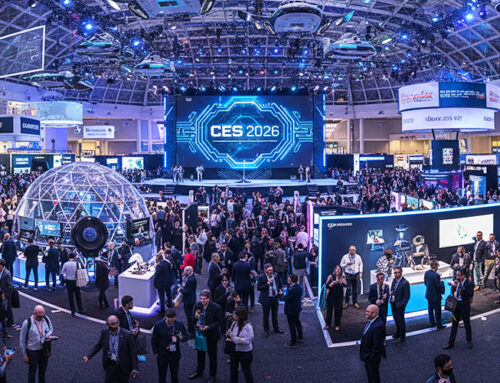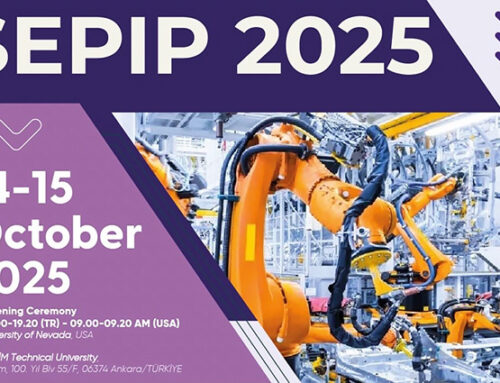
How DeepSeek and Tachyum Are Redefining the Future of Artificial Intelligence
Industry experts suggest that the decline in stock prices of U.S. AI companies reflects a correction of market enthusiasm rather than a shift in fundamentals and is unlikely to impact long-term valuations. There are multiple reasons for this.
The AI hardware market is experiencing shortages, driving up prices for components like DRAM and leaving many contracts unfulfilled.
The Capital Expenditure (CAPEX) of U.S. hyperscale and AI companies remains steady, driven by consistent demand and monetization. AI is enhancing efficiency across industries, driving financial returns that sustain strong demand. Lowering the cost of AI—much like the shift from mainframes to minicomputers and PCs—has not shrunk the market but has significantly expanded it.
Microsoft’s CEO referencing Jevons Paradox was no coincidence. The paradox is named after William Stanley Jevons, a 19th-century English economist, who observed that technological improvements that increased the efficiency of coal use led to the increased consumption of coal in a wide range of industries.
“It is wholly a confusion of ideas to suppose that the economical use of fuel is equivalent to a diminished consumption.”
— W. Stanley Jevons, The Coal Question (1865)
DeepSeek’s claims have not been independently verified but appear to be based on sound theoretical foundations. Their announcement was strategically timed, as the next generation of models is anticipated within approximately 12 months.
DeepSeek claims that they have distilled existing models that are evolving toward more compact and efficient representations, thereby reducing computational needs. They reported spending around USD 6 million to train their model—more than 10x lower than the cost of Meta’s (Facebook’s) models. They achieved this capability using lower-performance NVIDIA GPUs, which are also lower in cost. Due to export controls, they could not use high-end NVIDIA GPUs.
Chinese companies have been forced to focus on efficiency, unlike U.S. companies that simply throw money at the problem. DeepSeek models roughly match the accuracy of ChatGPT-4o. Each new generation of ChatGPT models is about 10x bigger than the previous one, and the new models are being released in about a year. The next-generation ChatGPT-5 is expected in approximately 12 months. It will take DeepSeek time to develop more compact and distilled models like ChatGPT-5.
The huge contribution of DeepSeek to humanity is that applying their techniques to next-generation models—making them 10x more efficient—will mean that future models will require similar resources and costs as today’s models, rather than being 10x more expensive.
DeepSeek is open source, allowing all AI developers to adopt these efficient approaches.
Artificial Intelligence
Today’s Generative AI and the Path to AGI
Today’s generative AI falls far short of true Artificial General Intelligence (AGI). It is trained on only a fraction of the text produced by humanity. If the current rate of model growth can be sustained, AI models will be trained on all human-produced text by approximately 2032.
Therefore, improvements and demand for greater capacity should continue for at least 7–8 more years. However, sustaining the current growth rate will become increasingly difficult due to financial constraints, power limitations, and semiconductor capacity.
AI Hardware and Efficiency Improvements
AI models function as AI software running on AI hardware. DeepSeek models currently run on NVIDIA GPUs but are compatible with other hardware. Tachyum is working to port DeepSeek onto its hardware.
The industry is exploring multiple ways to improve efficiency. A key development is that DeepSeek used FP8 data formats instead of BF16 (used by Google TPU) for training.
- FP8 takes 2× less memory than BF16 and provides about 4× higher semiconductor efficiency and/or improved power efficiency.
- Tachyum announced FP8 support years ago, and it is expected that the entire AI industry will transition to FP8 training.
- Tachyum’s FP8 matrix multiply-add reportedly operates at a higher precision than NVIDIA’s FP8, which should yield even better results for DeepSeek.
The next frontier in efficiency is FP4 training, which is:
- 4× more efficient than FP8 training
- Consumes 2× less memory
The industry is making steady progress toward FP4 training, and Tachyum’s hardware provides superior support for it. Notably, Tachyum unveiled FP4 technology years before NVIDIA even mentioned it. If DeepSeek—or the broader AI industry—masters FP4 training, Tachyum’s Prodigy hardware will become the superior platform for AI processing.
Tachyum’s Role in AI Advancements
Tachyum has previously published research on Tachyum AI (TAI) 4-bit and 2-bit effective weights for Large Language Models (LLM). The findings revealed that:
- 4-bit weights are fully viable for AI models.
- 2-bit weights cause only minor accuracy degradation.
To the best of our knowledge, Tachyum’s AI efficiency achievements have not yet been surpassed by NVIDIA. For generative AI inference, Tachyum’s chips are expected to further improve the efficiency of DeepSeek.
Another key DeepSeek innovation—which is hardware-independent—is the optimization of Mixture of Experts (MoE) models in generating responses.
- Preliminary findings suggest that DeepSeek requires 10× fewer experts to load into memory and activate.
- This breakthrough is expected to be adopted soon by U.S. AI leaders such as OpenAI, Meta, Microsoft, and Google.
Overall, Tachyum views the DeepSeek announcement as extremely positive, validating Tachyum’s processor development strategy.
Global AI Competition and U.S. Response
Tachyum’s Prodigy chips will accelerate the deployment of next-generation models like ChatGPT-5. Without them, the 10× larger models would be too costly to deploy in ROI-sensitive markets.
Due to chip export restrictions, Chinese companies have prioritized efficiency—and succeeded. Since DeepSeek is open source, U.S. companies will now rush to catch up with DeepSeek’s software advancements, resulting in more cost-effective and power-efficient AI worldwide.
U.S. Response to DeepSeek’s Advancements:
- Top officials have referred to DeepSeek’s progress as a “Sputnik moment”, recognizing the urgency of AI investment.
- This has led to discussions about a U.S. AI Manhattan Project, focusing on dramatic AI investment and R&D expansion.
- The StarGate project aims to raise and invest $100–500 billion USD in AI over the next four years.
- Other nations are now expected to increase their AI R&D budgets to remain competitive.
“Tachyum will enable the widespread implementation of next-generation AI models like ChatGPT-5 much sooner. Without our Prodigy chips, the cost of 10× larger models would significantly constrain deployment in ROI-sensitive markets.”





